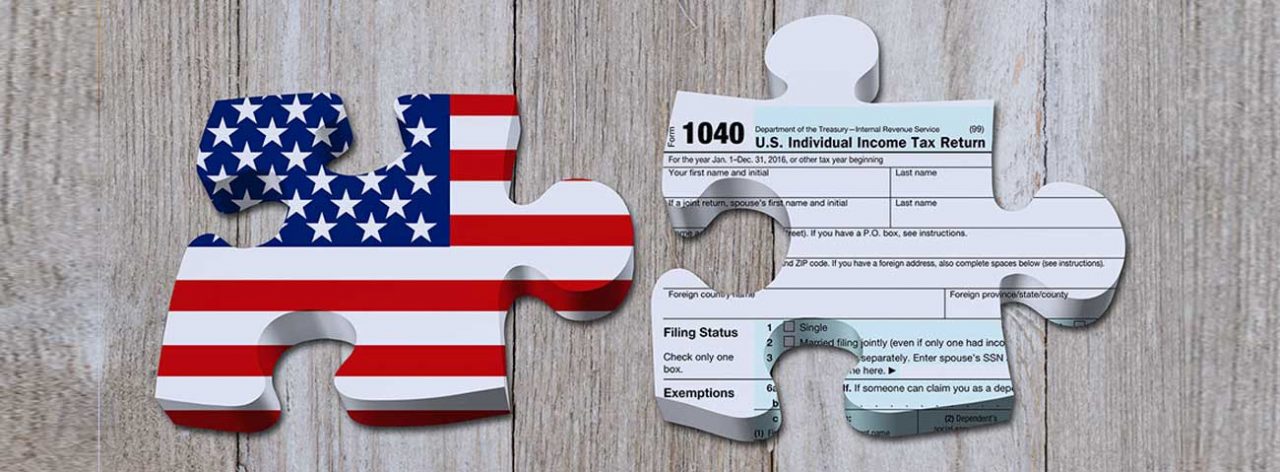On 17 November 2022, the government undertook the third fiscal statement in as many months, against a backdrop of rising inflation and economic recession. The Chancellor laid out three core priorities of stability, growth and public services. The government sought a balanced path to support the economy and return to growth, partially through public spending restraint and partially through tax rises.
Income tax
Income tax rates
The government had previously announced that there would be a cut in the basic rate of income tax, from 20% to 19%, from April 2024. This was to be accelerated so that it took effect from April 2023. However, whilst the government aims to proceed with the cut in due course, this will only take place when economic conditions allow and a change is affordable. The basic rate of income tax will therefore remain at 20% indefinitely.
At the Mini Budget on 23 September 2022 the government announced a plan to abolish the 45% additional rate of income tax from April 2023. It was announced on 3 October 2022 that the government would not proceed with this plan.
From 6 April 2023, the point at which individuals pay the additional rate will be lowered from £150,000 to £125,140.
The additional rate for non-savings and non-dividend income will apply to taxpayers in England, Wales, and Northern Ireland. The additional rate for savings and dividend income will apply to the whole of the UK.
Income tax allowances
The income tax personal allowance and higher rate threshold were already fixed at their current levels until April 2026 and will now be maintained for an additional two years until April 2028. They will be £12,570 and £50,270 respectively.
The government will uprate the married couple’s allowance and blind person’s allowance by inflation for 2023/24.
Dividends
The government has also confirmed that, from April 2023, the rates of taxation on dividend income will remain as follows:
- the dividend ordinary rate – 8.75%
- the dividend upper rate – 33.75%
- the dividend additional rate – 39.35%.
As corporation tax due on directors’ overdrawn loan accounts is paid at the dividend upper rate, this will also remain at 33.75%.
In addition, the government will reduce the Dividend Allowance from £2,000 to £1,000 from April 2023 and to £500 from April 2024.
These changes will apply to the whole of the UK.
National Insurance contributions
In September 2021 the government published its proposals for new investment in health and social care in England. The proposals were intended to lead to a permanent increase in spending not only in England but also by the devolved governments. To fund the investment the government introduced a UK-wide 1.25% Health and Social Care Levy based on the National Insurance contributions (NICs) system but ringfenced for health and social care.
The Health and Social Care Levy Act provided for a temporary 1.25% increase to both the main and additional rates of Class 1, Class 1A, Class 1B and Class 4 NICs for 2022/23. From April 2023 onwards, the NIC rates were intended to revert back to 2021/22 levels and be replaced by a new 1.25% Health and Social Care Levy.
However, the government has:
- reversed the temporary increase in NICs and
- cancelled the Health and Social Care Levy completely.
Comment |
| According to the government, not proceeding with the Levy will reduce tax for 920,000 businesses by nearly £10,000 on average next year.
For SMEs, the government predicts that the savings will be around £4,200 on average for small businesses and £21,700 for medium sized firms from 2023/24. In addition, it will help almost 28 million people across the UK save £330 on average in 2023/24, with an additional saving of around £135 on average this year.
|
More detail for employees and employers
The changes took effect for payments of earnings made on or after 6 November 2022, so:
- primary Class 1 NICs (employees) generally reduced from 13.25% to 12% and 3.25% to 2% and
- secondary Class 1 NICs (employers) reduced from 15.05% to 13.8%.
The effect on Class 1A (payable by employers on taxable benefits in kind) and Class 1B (payable by employers on PAYE Settlement Agreements) NICs will effectively be averaged over the 2022/23 tax year, so that the rate will generally be 14.53%.
Comment |
| The government hopes that most employees will receive the NICs reduction directly via the payroll in their November pay but acknowledges that some will have to wait until December or January, depending on the complexity of their employer’s payroll software. |
More detail for the self-employed
Following the principle detailed above, the changes to Class 4 NICs will again be averaged across 2022/23, so that the rates will be 9.73% and 2.73%.
NICs thresholds
A similar principle to that outlined above for income tax thresholds will be followed in respect of the NICs upper earnings limit and upper profits limit. From July 2022, the NICs primary threshold and lower profits limit were increased to align with the personal allowance and will be maintained at this level from April 2023 until April 2028. The Class 2 lower profits threshold will also be fixed from April 2023 until April 2028 to align with the lower profits limit. They will again be £12,570 and £50,270 as appropriate.
In addition, the government will fix the lower earnings limit and the small profits threshold at 2022/23 levels in 2023/24, namely £6,396 and £6,725 per annum respectively.
The government will uprate the Class 2 and Class 3 NICs rates for 2023/24 to £3.45 per week and £17.45 respectively.
Finally, the government will fix the level at which employers start to pay Class 1 NICs for their employees at £9,100 from April 2023 until April 2028.
Comment |
| The government states: ‘It is fair that businesses play their part in reducing the UK’s debt. The Employment Allowance means that 40% of businesses do not pay NICs and will be unaffected by this change, and the largest employers contribute the most.’ |
Capital gains
The government has announced that the capital gains tax annual exempt amount will be reduced from £12,300 to £6,000 from April 2023 and to £3,000 from April 2024.
Comment |
| Combined with the changes to the Dividend Allowance, these measures will raise over £1.2 billion a year from April 2025. |
Inheritance tax
The inheritance tax nil-rate bands are already set at current levels until April 2026 and will stay fixed at these levels for a further two years until April 2028. The nil-rate band will continue at £325,000, the residence nil-rate band will continue at £175,000 and the residence nil-rate band taper will continue to start at £2 million.
Stamp Duty Land Tax
A number of changes were made to the Stamp Duty Land Tax (SDLT) regime earlier this year and these remain. Generally, the changes increase the amount that a purchaser can pay for residential property before they become liable for SDLT.
The residential nil rate tax threshold increased from £125,000 to £250,000.
The nil rate threshold for First Time Buyers’ Relief increased from £300,000 to £425,000 and the maximum amount that an individual can pay while remaining eligible for First Time Buyers’ Relief increased to £625,000.
The changes apply to transactions with effective dates on and after 23 September 2022 in England and Northern Ireland. These changes do not apply to Scotland or Wales which operate their own land transactions taxes.
There are no changes in relation to purchases of non-residential property.
| Residential
Band £ |
Rate
% |
Non-residential
Band £ |
Rate
% |
| 0 – 250,000 | 0 | 0 – 150,000 | 0 |
| 250,001 – 925,000 | 5 | 150,001 – 250,000 | 2 |
| 925,001 – 1,500,000 | 10 | Over 250,000 | 5 |
| Over 1,500,000 | 12 |
Higher rates may be payable where further residential properties are acquired.
Comment |
| However, the government has now confirmed that these changes will be a temporary SDLT reduction. The SDLT cut will remain in place until 31 March 2025 to support the housing market. |
Land Transaction Tax
The Welsh government also altered its rates in relation to land and buildings in Wales for transactions with an effective date on or after 10 October 2022.
| Residential
Band £ |
Rate
% |
Non-residential
Band £ |
Rate
% |
| 0 – 225,000 | 0 | 0 – 225,000 | 0 |
| 225,001 – 400,000 | 6 | 225,001 – 250,000 | 1 |
| 400,001 – 750,000 | 7.5 | 250,001 – 1,000,000 | 5 |
| 750,001 – 1,500,000 | 10 | Over 1,000,000 | 6 |
| Over 1,500,000 | 12 |
Higher rates may be payable where further residential properties are acquired.
Business
Corporation tax rates
It had been previously announced that the expected increase in the rate of corporation tax for many companies from April 2023 to 25% would not go ahead. However the government announced on 14 October 2022 that this increase will now proceed and this has been confirmed.
This means that, from April 2023, the rate will increase to 25% for companies with profits over £250,000. The 19% rate will become a small profits rate payable by companies with profits of £50,000 or less. Companies with profits between £50,001 and £250,000 will pay tax at the main rate reduced by a marginal relief, providing a gradual increase in the effective corporation tax rate.
In addition:
- bank corporation tax surcharge changes will proceed, meaning that from April 2023 banks will be charged an additional 3% rate on their profits above £100 million and
- from April 2023 the rate of diverted profits tax will increase from 25% to 31%.
Capital allowances
The Annual Investment Allowance (AIA) gives a 100% write-off on certain types of plant and machinery up to certain financial limits per 12-month period. The limit has been £1 million for some time but was scheduled to reduce to £200,000 from April 2023. The government has announced that the temporary £1 million level of the AIA will become permanent and the proposed reduction will not occur.
Up to 31 March 2023, companies investing in qualifying new plant and machinery are able to benefit from capital allowances, generally referred to as ‘super-deductions’. These reliefs are not available for unincorporated businesses.
Comment |
| Companies incurring expenditure on plant and machinery should carefully consider the timing of their acquisitions to optimise their cashflow. |
The government will also extend the 100% first year allowance for electric vehicle chargepoints to 31 March 2025 for corporation tax purposes and 5 April 2025 for income tax purposes.
Research and Development
For expenditure on or after 1 April 2023, the Research and Development Expenditure Credit (RDEC) rate will increase from 13% to 20% but the small and medium-sized enterprises (SME) additional deduction will decrease from 130% to 86% and the SME credit rate will decrease from 14.5% to 10%.
Comment |
| This government states that ‘this reform ensures that taxpayer support is as effective as possible, improves the competitiveness of the RDEC scheme, and is a step towards a simplified, single RDEC-like scheme for all’. The government will consult on the design of a single scheme and consider whether further support is necessary for R&D intensive SMEs. As previously announced at Autumn Budget 2021, the R&D tax reliefs will be reformed by expanding qualifying expenditure to include data and cloud costs, refocusing support towards innovation in the UK, and targeting abuse and improving compliance. |
Seed Enterprise Investment Scheme
From April 2023, companies will be able to raise up to £250,000 of Seed Enterprise Investment Scheme (SEIS) investment, a two-thirds increase. To enable more companies to use SEIS, the gross asset limit will be increased to £350,000 and the age limit from two to three years. To support these increases, the annual investor limit will be doubled to £200,000.
Company Share Option Plan
From April 2023, qualifying companies will be able to issue up to £60,000 of Company Share Option Plan (CSOP) options to employees, twice the current £30,000 limit. The ‘worth having’ restriction on share classes within CSOP will be eased, better aligning the scheme rules with the rules in the Enterprise Management Incentive scheme and widening access to CSOP for growth companies.
VAT
The VAT registration and deregistration thresholds will not change for a further period of two years from 1 April 2024, staying at £85,000 and £83,000 respectively.
Comment |
| According to the government, at £85,000, the UK’s VAT registration threshold is more than twice as high as the EU and OECD averages. |
Vehicles
The government will set the rates for the taxation of company car benefits until April 2028 to provide long term certainty for taxpayers and industry. Rates will continue to incentivise the take up of electric vehicles.
In addition, from 6 April 2023 car and van fuel benefits and the van benefit charge will increase in line with inflation.
Comment |
| In addition, from April 2025 electric cars, vans and motorcycles will begin to pay Vehicle Excise Duty in the same way as petrol and diesel vehicles. According to the government, this will ensure that all road users begin to pay a fair tax contribution as the take up of electric vehicles continues to accelerate. |
Welfare, work and pensions
Cost of living payments
The government will provide households on means-tested benefits with an additional £900 cost of living payment in 2023/24. Pensioner households will receive an additional £300 and individuals on disability benefits will receive an additional £150.
Uprating of benefits
The government will increase benefits in line with inflation, including the state pension. The standard minimum income guarantee in pension credit will also increase in line with inflation from April 2023.
Comment |
| Around 19 million families will see their benefit payments increase from April 2023. |
Raising the benefit cap
The benefit cap will be raised in line with inflation, so that more households will see their payments increase as a result of uprating from April 2023. The cap will be raised from £20,000 to £22,020 for families nationally and from £23,000 to £25,323 in Greater London. For single adults it will be raised from £13,400 to £14,753 nationally and from £15,410 to £16,967 in Greater London.
National Living Wage and National Minimum Wage uprating
The government will increase the National Living Wage (NLW) and National Minimum Wage from 1 April 2023 as follows:
- the rate for 23 year olds and over to £10.42 an hour
- the rate for 21-22 year olds to £10.18 an hour
- the rate for 18-20 year olds to £7.49 an hour
- the rate for 16-17 year olds to £5.28 an hour and
- the apprentice rate to £5.28 an hour.
Comment |
| This represents an increase of over £1,600 to the annual earnings of a full-time worker on the NLW and is expected to benefit over two million low paid workers. |
In-work conditionality for Universal Credit claimants
The government will bring forward the nationwide rollout of the In-Work Progression Offer, starting with a phased rollout from September 2023, to support individuals on Universal Credit (UC) and in work to increase their earnings and move off benefits entirely. This will mean that over 600,000 claimants on UC whose household income is typically between the equivalent of 15 and 35 hours a week at the NLW will be required to meet with a dedicated work coach in a Jobcentre Plus to increase their hours or earnings.
Energy
The Autumn Statement sets out reforms to ensure businesses in the energy sector who are making extraordinary profits contribute more. From 1 January 2023, the Energy Profits Levy will be increased to 35% and extended to the end of March 2028 and a new, temporary 45% Electricity Generator Levy will be applied on the extraordinary returns being made by electricity generators.
The Energy Price Guarantee (EPG) will be maintained through the winter, limiting typical energy bills to £2,500 per year. From April 2023 the EPG will rise to £3,000.
The government is also setting a national ambition to reduce energy consumption by 15% by 2030, delivered through public and private investment, and a range of cost-free and low-cost steps to reduce energy demand.








